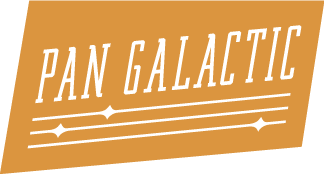You benefit from SEO every day, although you might not realize it. Every time you type a search term into Google and click on the first two or three links, you’re demonstrating the power of SEO. Stronger perhaps than any other force on the internet, SEO is the ultimate way to drive traffic to a website.
So what is SEO? It stands for Search Engine Optimization. The process involves changing the code and copy of a website in such a way that it will appear higher in search engine rankings. There are several ways to approach this process, but there are a few hard and fast rules that you should always follow. I’ll break this down into a few basic sections.
1. Keywords
2. Links and Back links
3. Site maps
4. Choosing your URL
5. Images
6. Content
7. Social Media
Now, before you go running the other direction, hear me out. Seven steps. That’s it. Just seven basic steps to get you started down the path of learning SEO.
Part One: Keywords
Keywords are the lifeblood of SEO. The search terms you use in Google determine what pages appear in the results. For instance, searching “Credit cards” will bring up a listing of websites dealing with credit cards. Those websites that use keywords most effectively, however, will rank much higher, and ranking high is what you want. Did you realize that the first link in a Google search result gets 42% of the traffic? That’s one link getting nearly half of all web traffic. You want your site to rank high, within the top five, or at the very least on the front page.
Part Two: Back links
Google’s algorithm (the one that determines how well your page ranks) looks at how many links you have from other sites. In a way, links are like votes. If a credible source, like the New York Times or Mashable, links to your site, this shows that you are providing high quality content and your site can be trusted. In a way, it’s an endorsemnt of your content.
Part Three: Site maps
When you are building your website, you will have the option to create a sitemap. Do this. It makes it far easier for the Google bots to navigate your page and rank it in the search engine than if you do not have one, and it proves your site to be more trustworthy. This is an often overlooked aspect of search engine optimization.
Part Four: Choosing your URL
In the section on keywords, I mentioned searching “Credit cards.” The number one result for that search is Creditcards.com. The second result is Visa.com. If having a keyword helps your ranking, then what does having a keyword in your URL do? Not only does it help provide direct traffic to your site, but it acts like steroids for your ranking in Google! If you have a website that reviews model cars, choose a URL like modelcarreviews.com. All of your keywords are present, and it’s not likely that anything will outrank you if you take the time to optimize the rest of your site. Choosing your URL is one of the most important aspects of SEO.
Part Five: Images
When you use images on your site (and you should), be sure to include descriptions, and use your keywords in the meta data for that image. The search algorithms pick up on images, as well, so be sure to use everything you can to help rank your page higher.
Part Six: Content
Arguably one of the most important aspects of Search Engine Optimization, your web site must have quality content that is both useful and relevant to your audience. Without this, not only is your site essentially worthless, but your ranking will hurt. By providing quality content, visitors will return time and time again and refer their friends to you. Not only that, but your rankings will increase. You don’t have to be a brilliant writer to provide quality content, either. Just write clean copy with headlines, subheads, and sprinkle your keyword throughout.
Part Seven: Social Media
This section is related to linking in a way. You want your site to be shared on social media. In fact, if your site goes viral, even better. The verdict is still out on how much Social impacts SEO, but it is a great avenue for getting your content in from of people that can link to it. Don’t forget about the links!
This article is just scratching the surface of SEO; there is much more to it than just this, but these steps give you a good start. Check out some of the links below to learn more.




